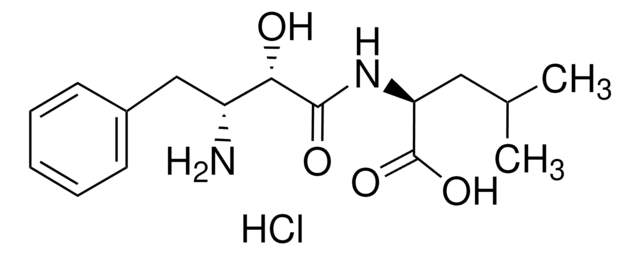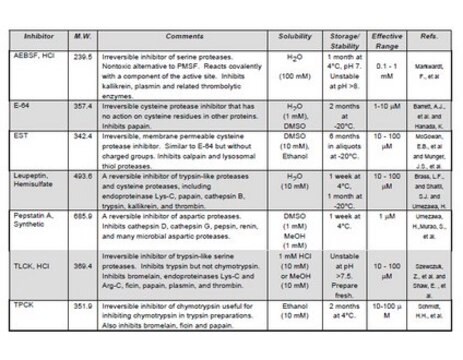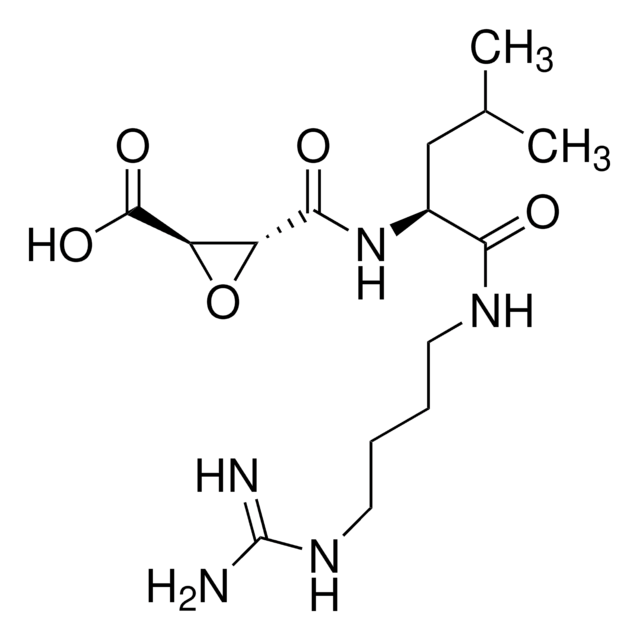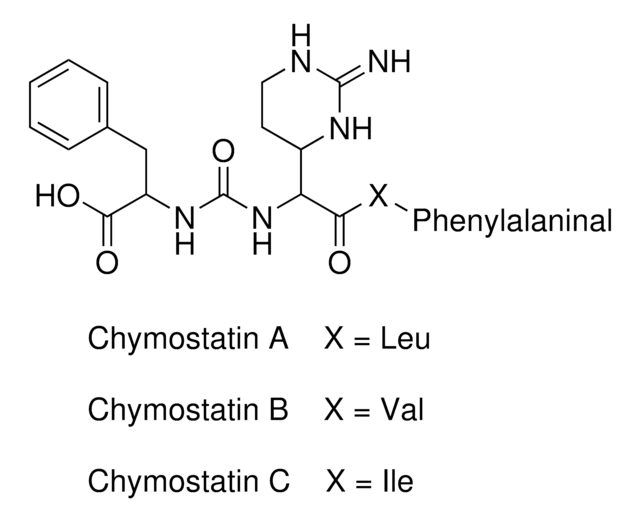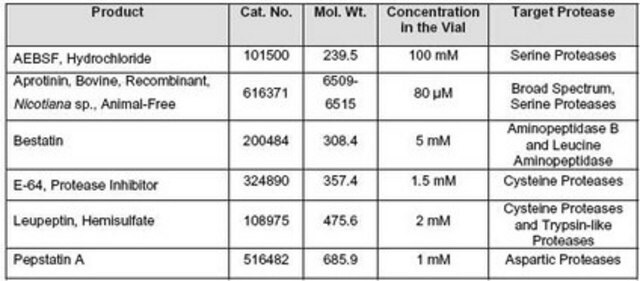INHIB1
Protease Inhibitor Kit
powder, for the inhibition of serine, cysteine, calpains and metalloproteinases, for custom cocktail preparation
Synonym(s):
Protease inhibitor
Sign Into View Organizational & Contract Pricing
All Photos(1)
About This Item
UNSPSC Code:
12352202
NACRES:
NA.77
form:
powder
storage temp.:
−20°C
Recommended Products
Product Name
Protease Inhibitor Panel, for custom cocktail preparation
Quality Level
form
powder
storage temp.
−20°C
General description
As powders, all reagents can be stored at 0 °C. Those reagents designated for room temperature and 2-8 °C storage do not require storage at 0 °C, but will not be adversely affected when stored at 0 °C. Allow all powders to warm to room temperature before opening. Store tightly sealed and protect from moisture.
Application
Create your own broad-spectrum protease inhibitor cocktails or screen your extracts for proteolytic activity. Panel includes inhibitors for serine, cysteine, calpains and metalloproteinases. Components also include the economical alternatives NEM, EAC and trypsin inhibitor.
Stock solutions of each inhibitor should be prepared first, prior to creating a cocktail. Mixtures of some inhibitor stock solutions may result in precipitation due to interactions between inhibitors and the mixing of solvents. In most cases further dilution will aid solubility.
Stock solutions of each inhibitor should be prepared first, prior to creating a cocktail. Mixtures of some inhibitor stock solutions may result in precipitation due to interactions between inhibitors and the mixing of solvents. In most cases further dilution will aid solubility.
Other Notes
All kit components are also available separately.
Kit Components Only
Product No.
Description
- E-64 5 mg
- AEBSF 25 mg
- Antipain 5 mg
- Aprotinin 5 mg
- Benzamidine HCl 5 g
- Bestatin 5 mg
- Chymostatin 5 mg
- EDTA 50 g
- ε-aminocaproic acid 25 g
- N-Ethylmaleimide 5 g
- Leupeptin 5 mg
- Pepstatin A 5 mg
- Phosphoramidon 5 mg
- Trypsin inhibitor 100 mg
See All (14)
Signal Word
Danger
Hazard Statements
Precautionary Statements
Hazard Classifications
Acute Tox. 2 Oral - Acute Tox. 3 Dermal - Acute Tox. 4 Inhalation - Eye Dam. 1 - Resp. Sens. 1 - Skin Corr. 1A - Skin Sens. 1 - STOT RE 2 Inhalation
Target Organs
Respiratory Tract
Storage Class Code
6.1A - Combustible acute toxic Cat. 1 and 2 / very toxic hazardous materials
Flash Point(F)
Not applicable
Flash Point(C)
Not applicable
Choose from one of the most recent versions:
Already Own This Product?
Find documentation for the products that you have recently purchased in the Document Library.
Customers Also Viewed
Programmed autophagy in the fat body of Aedes aegypti is required to maintain egg maturation cycles.
Bart Bryant et al.
PloS one, 6(11), e25502-e25502 (2011-11-30)
Autophagy plays a pivotal role by allowing cells to recycle cellular components under conditions of stress, starvation, development and cancer. In this work, we have demonstrated that programmed autophagy in the mosquito fat body plays a critical role in maintaining
Huan Long et al.
BMC neuroscience, 12, 17-17 (2011-02-08)
Disabled-1 (Dab1) is an adaptor protein that is essential for the intracellular transduction of Reelin signaling, which regulates the migration and differentiation of postmitotic neurons during brain development in vertebrates. Dab1 function depends on its tyrosine phosphorylation by Src family
Our team of scientists has experience in all areas of research including Life Science, Material Science, Chemical Synthesis, Chromatography, Analytical and many others.
Contact Technical Service
